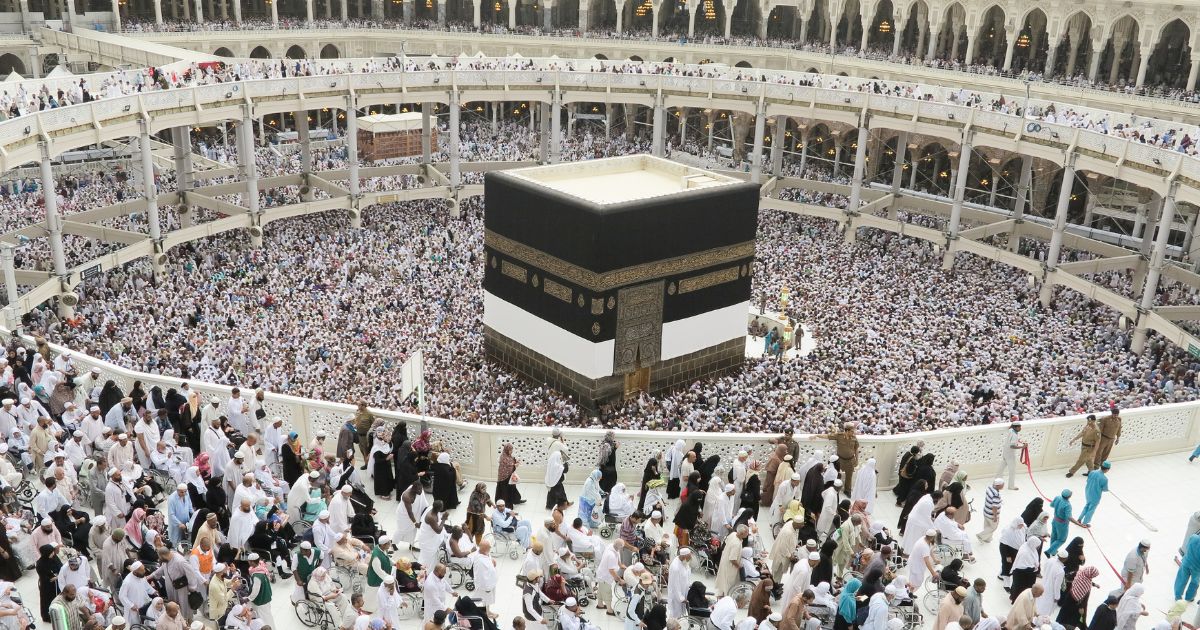The Hajj Pilgrimage and Its Rituals
The Hajj, one of the five pillars of Islam, is a profound and transformative spiritual journey that millions of Muslims undertake each year. At the heart of this pilgrimage is the Kaaba, a sacred structure in Mecca, Saudi Arabia.
Most importantly, as the pilgrims arrive in Mecca, they begin their Hajj journey with a significant ritual, circling the Kaaba seven times.
Here’s a breakdown of the key Hajj Pilgrimage rituals
The Hajj pilgrimage comprises a series of rituals performed over several days.
Preparation and Intention (Niyyah)
Firstly, before departing, pilgrims set their intention for Hajj and enter the state of Ihram, wearing simple white clothes.
Tawaf
Upon reaching Mecca, pilgrims circumambulate the Kaaba, the cube-shaped structure considered the holiest site in Islam, seven times counter-clockwise.
Sa’i
Next, pilgrims perform Sa’i, a brisk run Between Safa and Marwa hills, and walk seven times. Honoring Hagar’s search for water for her son Ishmael.
Standing at Arafat
Furthermore, a central ritual of Hajj is (wuquf ‘arafah), which stands in prayer and supplication on the plains of Arafat. This day is considered the most important day of Hajj.
Muzdalifah and Mina
Moreover, After Arafat, hajj pilgrims move to Muzdalifah for night prayers and then to Mina, where they throw stones at three pillars, symbolizing the rejection of temptation.
Animal Sacrifice (Qurbani) and Eid al-Adha
On the Day of Sacrifice, pilgrims sacrifice an animal, commemorating Abraham’s willingness to sacrifice his son Ishmael. This sacrifice coincides with the global Islamic celebration of Eid al-Adha.
Farewell, Tawaf
Finally, before departing Mecca, pilgrims perform a final walk around the Kaaba, the farewell Tawaf.

The Significance of Tawaf
Tawaf, the ritual of circling the Kaaba, is a fundamental component of the Hajj pilgrimage. Furthermore, it is a symbol of unity and equality among Muslims, as pilgrims from all corners of the world come together to perform this sacred act. The Kaaba, considered the House of Allah, is the focal point of the ritual, and pilgrims circle it seven times to demonstrate their devotion and commitment to their faith.
Circling the Kaaba
Tawaf is the first major rite of Hajj and involves pilgrims walking around the Kaaba seven times in a counter-clockwise direction. This act symbolizes the unity of believers in the worship of the One God, as Muslims from every corner of the globe gather and move in harmony around the central point of their faith.
- Starting Point – Pilgrims begin Tawaf at the corner of the Kaaba where the Black Stone (Hajar al-Aswad) is located. This corner is called the Rukn al-Aswad
- Counter-clockwise Circling – Pilgrims proceed in a counter-clockwise direction, ensuring that the Kaaba is to their left. This motion is repeated seven times, representing the seven heavens and the infinity of God’s creation.
- Supplications and Prayers – During Tawaf, pilgrims recite prayers and supplications, seeking forgiveness, mercy, and blessings from Allah. It is a deeply personal time of reflection and devotion.
- Completion of Tawaf – After completing the seven circuits, pilgrims perform a short prayer at the Station of Abraham (Maqam Ibrahim) and drink water from the Zamzam well, which holds religious significance due to its miraculous origins.
The Spiritual Importance of Tawaf
Tawaf is more than just a physical act; it is a spiritual journey that connects the pilgrim with the divine. The ritual is a reminder of the unity and oneness of Allah, and the pilgrim’s connection to the Kaaba is seen as a symbol of their devotion and commitment to their faith. Circling the Kaaba is believed to bring the pilgrim closer to Allah, washing away their sins and purifying their soul.
Conclusion
Tawaf marks the momentous occasion of the start of the Hajj pilgrimage. Circling the Kaaba seven times is a powerful symbol of unity and devotion, connecting the pilgrim with the divine and the broader Muslim community. Millions of Muslims in Mecca perform this sacred act and are reminded of the importance of their faith and the significance of the Hajj pilgrimage.